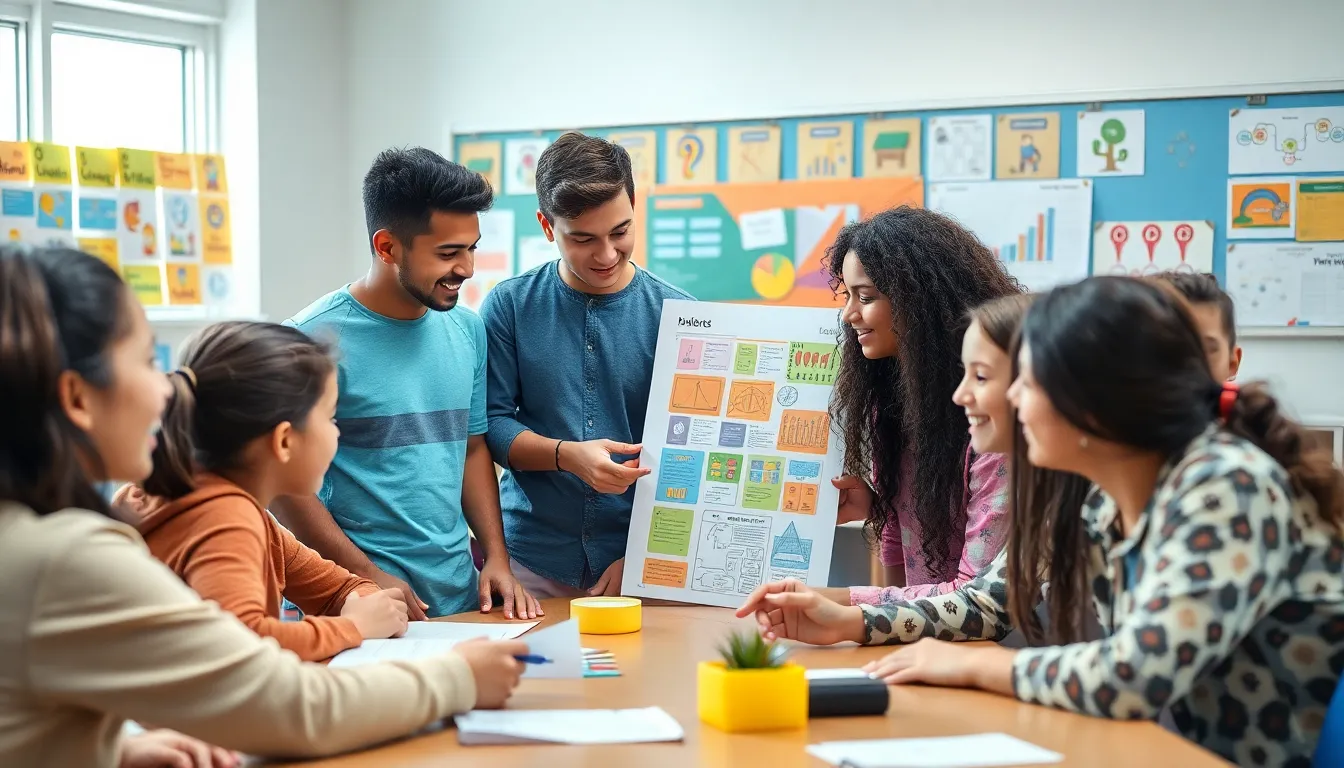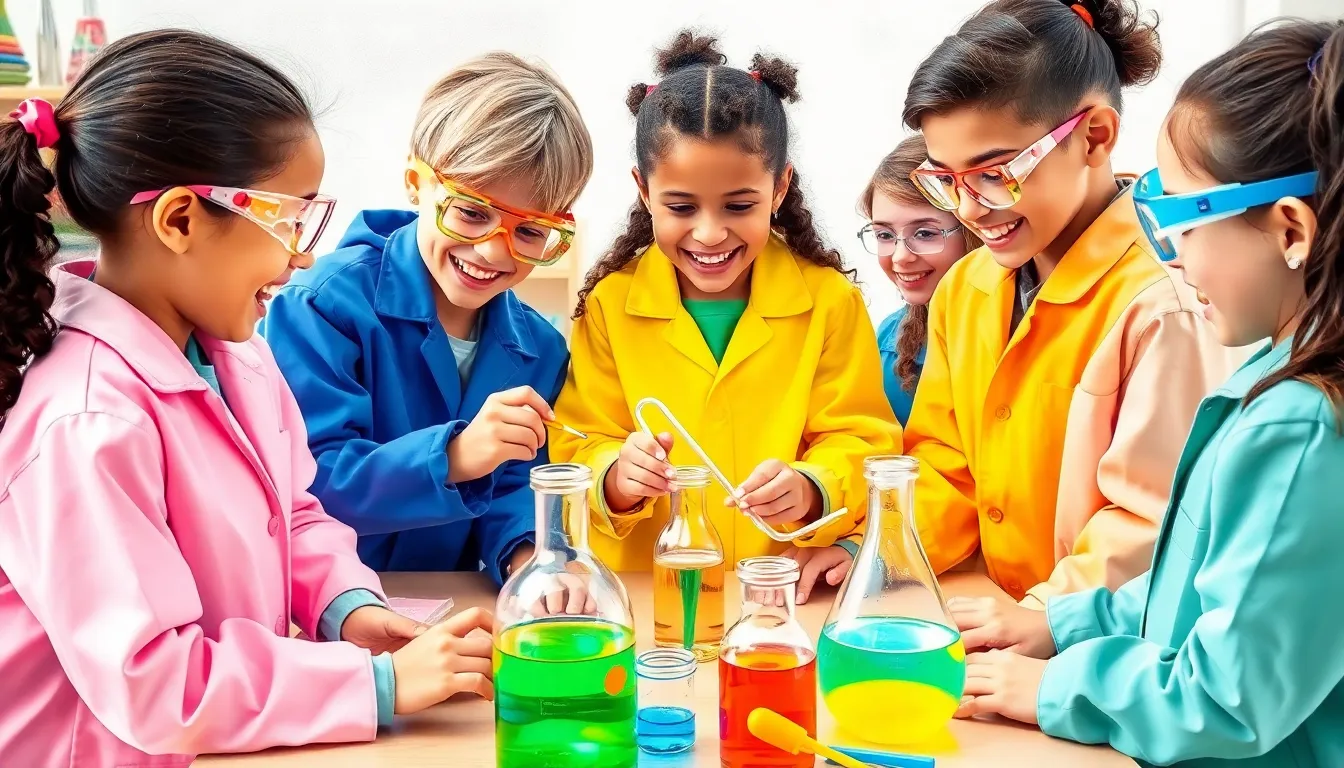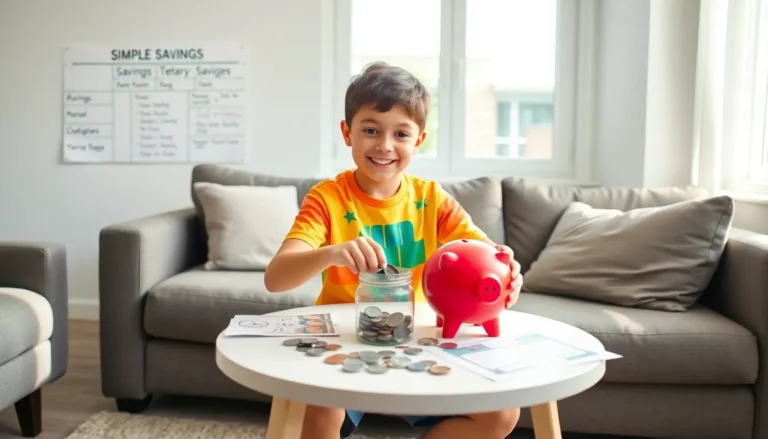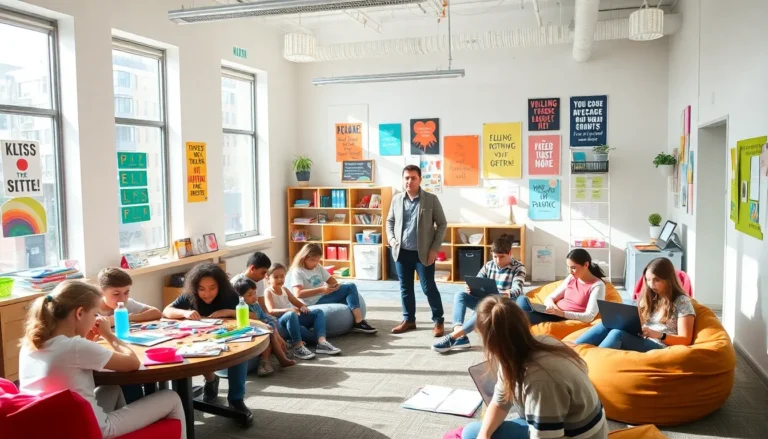Learning doesn’t have to feel like a chore. Imagine a world where education is as exhilarating as a roller coaster ride—filled with twists, turns, and unexpected thrills. Joyful learning experiences can transform mundane lessons into adventures that spark curiosity and ignite passion.
When students engage in fun, interactive activities, they’re not just absorbing information; they’re creating memories that last a lifetime. It’s like swapping out broccoli for chocolate cake—both are good for you, but one is a lot more enjoyable! By fostering an environment that prioritizes joy in learning, educators can unlock a treasure trove of creativity and enthusiasm in their students. Let’s dive into how joyful learning can reshape education and make learning a delightful journey rather than a tedious task.
Table of Contents
ToggleUnderstanding Joyful Learning Experiences
Joyful learning experiences create an environment where education becomes engaging and fun. This approach transforms typical educational settings, encouraging enthusiasm and creativity.
Definition of Joyful Learning
Joyful learning refers to an educational approach that prioritizes enjoyment as a central component. This method focuses on meaningful interactions, fostering curiosity while enhancing knowledge retention. Engaging activities and collaborative projects play a vital role in this process. For example, hands-on experiments in science classes often promote excitement and exploration among students. Additionally, incorporating games and artistic expressions can enrich the learning experience, making lessons memorable and effective.
Importance of Emotions in Learning
Emotions significantly influence the learning process. Positive feelings, such as joy and curiosity, enhance cognitive functions like memory and problem-solving. Engaged learners are more likely to participate actively and exhibit persistence when challenges arise. Additionally, emotionally supportive environments contribute to better interpersonal relationships among peers and instructors. Studies show that students who feel happy in learning settings demonstrate improved academic performance and a deeper understanding of material. By creating joyful experiences, educators can harness the power of emotions to optimize learning outcomes.
Characteristics of Joyful Learning Experiences

Joyful learning experiences share distinct characteristics that enhance engagement and foster positive educational environments.
Engagement and Motivation
Engagement acts as a cornerstone of joyful learning. It stems from interactive activities that capture students’ attention. When learners participate in hands-on experiments, they connect with the material on a deeper level. Motivation flourishes in settings where students feel excitement about their tasks. For instance, gamified learning approaches encapsulate this thrill, often resulting in higher participation rates. Engaged individuals are more likely to explore subjects beyond the curriculum, nurturing lifelong learners. Research shows that enthusiastic students demonstrate improved academic performance. This correlation between joy and motivation highlights the effectiveness of engaging environments.
Collaboration and Interaction
Collaboration encourages meaningful interactions in joyful learning settings. Students benefit from working together on projects, allowing them to share diverse perspectives. Group activities promote communication skills, essential for personal and professional growth. When learners collaborate, they develop social bonds, which enhances emotional support during challenging tasks. Interaction further helps learners articulate their thoughts clearly, refining their understanding of concepts. Events like peer teaching also illustrate the importance of collaborative learning. Participating in shared experiences cultivates a sense of community and belonging, vital for student success.
Strategies to Foster Joyful Learning Experiences
Educators can implement various strategies to cultivate joyful learning experiences, enhancing student engagement and motivation.
Creative Teaching Methods
Creative teaching methods spark enthusiasm and encourage active participation. Integrating project-based learning drives students to explore real-world applications of their knowledge. Hands-on activities foster excitement while allowing learners to experiment and discover. Using storytelling in lessons enables students to connect emotionally with content, making it more relatable and memorable. Additionally, incorporating arts and crafts into lessons provides an outlet for self-expression. Diverse teaching styles accommodate different learning preferences, promoting inclusivity and engagement.
Utilizing Technology in the Classroom
Utilizing technology in the classroom enriches learning experiences and engages students effectively. Interactive tools, like digital simulations, allow learners to experiment in a safe environment. Online platforms facilitate collaboration among peers, breaking down geographic barriers and fostering teamwork. Gamified learning apps capture students’ attention, making lessons enjoyable while reinforcing concepts. Virtual reality experiences transport students to different settings, enhancing their understanding. By integrating multimedia resources, educators can cater to various learning styles, making content accessible and engaging for all students.
Benefits of Joyful Learning Experiences
Joyful learning experiences provide numerous advantages that enhance educational outcomes. These benefits include improved retention, understanding, and the cultivation of a growth mindset.
Enhanced Retention and Understanding
Engaging in joyful learning directly contributes to better retention and understanding of material. When learners enjoy the process, they are more likely to remember information long-term. Joyful activities stimulate emotions, which play a crucial role in memory retention. Students who experience happiness and curiosity are more likely to connect concepts meaningfully. Collaborative projects and interactive tasks further reinforce this connection, enabling learners to solidify their understanding through hands-on involvement. Research indicates that students who partake in joyful learning approaches achieve higher scores on assessments, reflecting a deeper grasp of the subject matter.
Fostering a Growth Mindset
Joyful learning experiences promote the development of a growth mindset. When educators create a playful atmosphere, students feel more comfortable taking risks and exploring new ideas. Encouragement in challenging situations fosters resilience and adaptability. An environment that prioritizes joy allows students to view mistakes as opportunities for growth rather than setbacks. Such positive reflections lead to increased motivation and persistence. As learners engage with content creatively, they develop confidence in their abilities. Ultimately, fostering a growth mindset through joyful learning experiences enhances problem-solving skills and nurtures lifelong learners.
Joyful learning experiences are essential for cultivating an engaging and effective educational environment. By prioritizing enjoyment and interaction, educators can inspire students to embrace their curiosity and creativity. This approach not only enhances knowledge retention but also fosters a sense of community and belonging among learners.
Incorporating hands-on activities and collaborative projects transforms traditional education into a dynamic journey. As students experience joy in learning, they develop resilience and a growth mindset that prepares them for future challenges. Ultimately, embracing joyful learning paves the way for lifelong learners who are motivated to explore and innovate.




